Papers and Media by John Carlaw
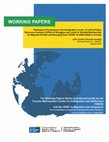
TMCIS-CERC Migration Working Paper Series, 2024
Who, and under what terms should members of Canadian society without full immigration status be a... more Who, and under what terms should members of Canadian society without full immigration status be able to access permanent residence has been the subject of long-term struggle and debate in the country's settler colonial context. Applying a critical policy discourse analysis (CPDA) approach to examine press releases, platforms, and mandate letters from actors active in Canada's "immigration battleground" (Ambrosini, 2021) from March 2020 to the end of 2022, this paper examines intensified struggles over access to permanent residence and permanent immigration levels in Canada amidst and emerging from the COVID-19 pandemic. It compares competing policy discourses and stances across much of the political spectrum on both these issues and organizations' general orientations to migration and belonging. Outside of the far-right and Québec separatist Bloc Québécois (BQ) party, who apply their own notable political pressures, from March 2020 to the end of 2022 there was near discursive consensus at the federal level amongst the actors we examine concerning the need for "pathways" to permanent residence for those living under temporary migration categories in Canada. This is an important discursive opening in policy discussions for more inclusive changes to the terms of societal membership in Canada and its boundaries of belonging. However, this surface-level consensus is far from being reflected or implemented in government policy at the scale such apparent discursive consensus would imply. Despite criticism from migrant rights organizations and the social democratic NDP, employers have been further empowered as actors in terms of setting the terms of societal membership in Canada in a manner that matches their policy demands and advocacy for greater access to migrant worker labour. To date, measures to implement "pathways" to permanent residence have been modest in comparison, despite the discourses of government mandate letters that would imply a facilitative approach to access to permanent residence and citizenship across skill levels and legal statuses. Indeed, the expansion of migrant labour continues to far exceed that of permanent immigration levels. Thus, while the ubiquity of pathways discourse has indicated a potential political opening for more inclusive policies, actual policy developments demonstrate their limits to date despite discourses celebrating the contributions of migrant and precarious status workers during and emerging from the pandemic. Substantively, in the documents examined here, pathways discourses and proposals appear to have provided a way for actors with very different political and policy agendas to signal their commitments to immigrant and migrant rights without necessarily engaging in more inclusive structural change that would address the insecurity and labour and human rights violations experienced by many living under temporary or precarious statuses. For that reason, and because of the stakes of these debates, the gap between actors' political and policy discourses demands sustained and intense scrutiny. As seen in recent government and opposition migration discourses, the growth of Canada's migrant worker and precarious status population and the important substantive rights that accrue to those who achieve permanent residence mean that pathways discourses and policies granting access to permanent residence will continue to be of tremendous importance. The paper concludes with some reflections on post-2022 developments, including December 2023 statements by Canada's Immigration Minister that a "broad and comprehensive" regularization program is forthcoming and a significant decline in public support for current immigration levels.
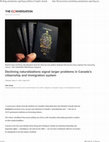
The Conversation, 2023
A recent press release from the Institute for Canadian Citizenship that cites Statistics Canada d... more A recent press release from the Institute for Canadian Citizenship that cites Statistics Canada data has highlighted concerns over a 40 per cent reduction in Canada’s “naturalization rate” — the rate at which permanent residents are becoming citizens.
The release, headlined Newcomers falling out of love with Canadian citizenship generated a number of other media headlines.
Concerns over how and whether those living and working in Canada are attaining citizenship and important rights — including to vote and run for office — are of course well placed. But love of country by immigrants is not the primary problem.
Individual choices and sentiments are a relevant factor, but there are observable structural explanations. Beyond Canada’s control, not all countries permit dual citizenship. That includes major source countries China and India where many immigrants to Canada are from. It is understandable that some permanent residents prefer not to renounce the citizenship of their country of origin.
But within Canada’s control, there are troubling shifts in our overall citizenship and immigration model. Inequalities connected to its colonial nature have left growing numbers of residents without citizenship or even a pathway to it. These shifts can be obscured by focusing primarily on the naturalization process and the sentiments some attach to it rather than the larger settler colonial landscape of migration and immigration and its relationship to citizenship and belonging at each stage.
Diversité Canadienne , 2021
Après 50 ans, les adjectifs utilisés pour caractériser le multi-
culturalisme contribuent à défin... more Après 50 ans, les adjectifs utilisés pour caractériser le multi-
culturalisme contribuent à définir son fond et sa portée. L’ob-
jectif de cet article est de contextualiser et d’appréhender la
déclinaison néoconservatrice du multiculturalisme au XXI e
siècle.
Studies in Political Economy, 2021
This paper combines critical antiracist perspectives with Poulantzas’ and Hall’s concepts of auth... more This paper combines critical antiracist perspectives with Poulantzas’ and Hall’s concepts of authoritarian statism and populism to examine the diminishment of democratic processes and the intensification of social relations of inequality in citizenship, immigration, and the state that accompanied the controversial expansion of migrant worker programs under Canada’s former Conservative government (2006–2015). It also discusses how the party and former government sought to maintain these problematic structures and their later response to the political fallout caused by their approach. The conclusion discusses this policy realm under the subsequent Liberal government during the COVID-19 pandemic.
Canadian Diversity/Diversité Canadienne , 2021
2021. “Multiculturalism and its Adjectives: Situating Neoconservative Multiculturalism” (pp. 34-4... more 2021. “Multiculturalism and its Adjectives: Situating Neoconservative Multiculturalism” (pp. 34-41) and /«Le multiculturalisme et ses adjectifs: Situer le multiculturalisme néoconservateur» (pp. 42-46), contribution to special issue of Canadian Diversity/Diversité Canadienne on the theme of Multiculturalism @50: Promoting Inclusion and Eliminating Racism, Vol 18, No. 1. Special issue edited by Will Kymlicka.
After 50 years, the adjectives used to characterize multiculturalism have come to define its substance and meaning. The aim of this article is to contextualize and grasp its twenty-first century neoconservative iteration.
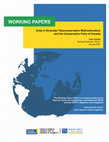
Working Papers Series produced jointly by the Ryerson Centre for Immigration and Settlement (RCIS) and the CERC in Migration and Integration at Ryerson University, 2021
Canada’s Conservative Party and former government’s (2006-2015) attempts to define and at times s... more Canada’s Conservative Party and former government’s (2006-2015) attempts to define and at times shift Canadian identity and notions of citizenship, immigration and multiculturalism to the right have been part of a significant political project featuring a uniquely creative and Canadian form of authoritarian populist politics in these realms. Their 2006 minority and 2011 majority election victories represented the culmination of a long march to power begun with the 1987 founding of the Reform Party of Canada. While they have at times purged themselves of some of the most blatant, anti-immigration elements of the discourses of their predecessor parties, continuities in its Canadian brand of authoritarian populist politics have continued in new forms since the founding of the new Conservative Party in 2003. This political project’s features and contradictions are constitutive of a disciplinary neoconservative variant of multiculturalism and Canadian nationalism. These are examined through a mix of critical discourse analysis of leading party figures’ speeches, platforms, government documents and policy analysis.
This paper outlines characteristics and realities of neoconservative multiculturalism, including references to the Conservatives’ time in office and dynamics since their defeat in the 2015 election. These characteristics include 1) pragmatically adapting themselves to common sense notions of multiculturalism and immigration in Canada while also seeking to shift the politics of multiculturalism in Canada rightward by 2) seeking to empty it of anti-racist content and bind its remnants to a neoconservative worldview and 3) engaging in practices and discourses of exclusion, including a) engaging in clash of civilizations and Islamophobic discourses and policies, b) re-ethnicizing Canadian citizenship, c) targeting asylum seekers and 4) bolstering and collaborating with anti-multicultural civil society voices and actors.
Overall, neoconservative multiculturalism is a creative and flexible ideological project enforcing and advancing a highly regressive form of politics and public policy. In part conceding to public opinion in favour of multiculturalism and Canada’s demographics, it includes pragmatic nods to diversity but hollows out potentially more progressive interpretations of multiculturalism while demanding adherence to disturbing forms of nationalism and patriotism that police and weaken public debate. While the party’s direction is somewhat open with Erin O’Toole having been chosen as their new leader by the party membership in August of 2020, on many fronts Conservative Party and extra-party right discourses have continued to degenerate in this realm since the party’s 2015 defeat.

Focused on the politics and policies of citizenship, immigration, and multiculturalism in Canada,... more Focused on the politics and policies of citizenship, immigration, and multiculturalism in Canada, this article employs the concepts of Kenneyism (Kenney-ism, named after Jason Kenney, Canada’s prominent former minister of citizenship, immigration, and multiculturalism) and neo-conservative multiculturalism to reconcile the Conservative Party of Canada’s long-term outreach efforts aiming to incorporate many new, ethnicized, and racialized Canadians into a “minimum winning coalition” with the exclusionary policies and creative discourses the party espoused and implemented during its time in office, 2006–2015. As forms of politics that Stuart Hall termed authoritarian populism, the emphasis on the “authoritarian” dimension of conservative populism foregrounds the often anti-democratic nature of the project both symbolically and substantively. This article outlines the roots of Kenneyism and neo-conservative multiculturalism within a discussion of the party’s evolution from its Reform and Alliance Party predecessors. It discusses five key characteristics and trends of the party’s political and governmental approach that demonstrate both their creative outreach and forms of disciplinary politics and social exclusion—particularly but not only with respect to Muslims, refugees, and temporary foreign workers. It concludes with reflections on the party’s record and the future of Kenneyism as a form of politics after the party’s 2015 electoral defeat and 2017 leadership contest.
Cet article utilise les concepts de Kenneyisme (Kenney-isme, du nom de Jason Kenney, l’ancien ministre canadien de la Citoyenneté, de l’Immigration et du Multiculturalisme) et de multiculturalisme néoconservateur pour réconcilier les efforts du Parti conservateur du Canada à intégrer de nouveaux Canadiens ethnicisés et racialisés dans une « coalition gagnante minimale » avec les politiques d’exclusion et les discours créatifs défendus et utilisés alors qu’il était au pouvoir, de 2006 à 2015, particulièrement en ce qui a trait aux musulmans, aux réfugiés et aux travailleurs étrangers temporaires. En tant que type de politique que Stuart Hall nomme populisme autoritaire, l’accent sur la dimension « autoritaire » du populisme conservateur met de l’avant la nature souvent antidémocratique du projet, et ce, tant dans sa symbolique que dans sa substance. Cet article résume les racines du Kenneyisme et du multiculturalisme néoconservateur et examine l’évolution du parti à partir des Parti réformiste et Alliance canadienne. Il explore les cinq caractéristiques et tendances clés de l’approche politique et gouvernementale du parti, lesquelles démontrent leurs activités de rayonnement créatives ainsi que leurs formes de politique disciplinaire et d’exclusion sociale. Il conclut avec des réflexions sur un constat actuel du parti et l’avenir du Kenneyisme en tant que politique après leur défaite électorale de 2015 et la course au leadership de 2017.
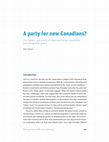
Chapter from The Harper Record 2008-2015, Canadian Centre for Policy Alternatives, published Octo... more Chapter from The Harper Record 2008-2015, Canadian Centre for Policy Alternatives, published October 5th, 2015.
The 2011 federal election saw the Conservatives complete their long march from
Reform Party roots to majority government. With this victory former citizenship and immigration minister Jason Kenney declared them the “party of new Canadians.” Former Conservative and Reform stalwart Tom Flanagan wrote that the party had found a new “ethnic pillar” of electoral support. While the extent of these claims has been challenged, some have argued they offer a positive model to other conservative parties worldwide. In some ways, the Conservatives have accommodated the party to Canada’s modern demographics. In government, they have maintained immigration levels for permanent residency and reached out to new Canadians and “ethnic voters” in a variety of ways as they seek to achieve Stephen Harper’s goal of making the Conservatives Canada’s “natural governing party.”
However, rather than serving as a positive model, the party is better viewed as having taken a creative yet cynical, incremental approach to achieving a majority government and shifting the gravity of Canadian politics to the right. The Conservatives have fostered and in other ways maintained and even deepened exclusionary inclinations held over from their Reform (1987–2000) and Canadian Alliance (2000–2003) predecessors. Theirs is a highly ideological and disciplinary approach to politics aimed at gaining a stable “minimum connected winning coalition” rather than seeking social consensus. The Conservative victory and time in power is best seen as the long-term culmination of a process of “Invasion from the Margin”—the right margin—of Canada’s political system, as Flanagan once framed the Reform project. The Conservative government’s policies adversely affect many actual and aspiring immigrants and have weakened democracy in policy-making in these fields. Unfortunately large numbers of (im)migrants and refugees have been perceived by the Conservatives as groups that can be excluded or their lives and existence made more difficult and precarious. Conservative populist discourses of acting in the interests of “ordinary people” and “hard working immigrants” often founder against the reality of policies that make (im)migrants’ lives unnecessarily more difficult. The government has also attempted to change the nature of public debate on citizenship, immigration and Canadian identity in troubling ways.
Such trends are evidenced in the 2014 Strengthening Canadian Citizenship Act.
Upcoming/Recent Talks by John Carlaw

Panelist: A Higher Education Approach to Refugee Resettlement, Integration, and Education
There is no doubt that higher education institutions can play a role in refugee resettlement and ... more There is no doubt that higher education institutions can play a role in refugee resettlement and integration. In 2015, many Canadian higher education institutions supported Syrian refugees’ resettlement efforts. For example, The University of Toronto, York University and OCAD University joined the Ryerson-led Lifeline Syria challenge. The initiative successfully engaged more than 1000 volunteers, raised $5 million, and sponsored over 400 Syrian refugees. Most recently, in response to the Afghan refugee crisis, the Diversity Institute at the Ted Rogers School of Management along other community leaders founded the Lifeline Afghanistan; a non-partisan network of individuals and organizations responding to the humanitarian crisis in Afghanistan. In this panel, we will hear from leaders who were involved in such initiatives and learn about other global and local best practices and higher education approaches to refugee resettlement, integration, and education.
The Conservative Party of Canada, Competing Multiculturalisms and the 2019 Canadian Federal Election
Papers by John Carlaw
Yasmeen Abu-Laban, Ethel Tungohan, and Christina Gabriel, Containing Diversity: Canada and the Politics of Immigration in the 21st Century
Journal of Australian, Canadian, and Aotearoa New Zealand Studies

Conservatism and the Re-Communitarianization of Citizenship in Canada
Nationalism and Ethnic Politics, 2022
While the values and practices usually subsumed under the notion of “good citizenship” are said t... more While the values and practices usually subsumed under the notion of “good citizenship” are said to have changed dramatically over the past 25 years or so, scholars are still struggling to characterize the concrete nature of these changes. Proposing a novel interdisciplinary approach that marries normative theory with empirically driven political sociology, in this paper we examine the explanations and justifications that flanked a plethora of new citizenship policies implemented under the former Stephen Harper-led Conservative government (2006–2015) in Canada. Critically employing Amitai Etzioni’s comparative typology of citizenship philosophies, we examine three types of Conservative policy discourses pertaining to citizenship, namely speeches given by the Minister of Citizenship and Immigration, speeches given by members of the Conservative Party in the House of Commons, and government press releases. In contrast to Etzioni’s optimistic presentation of neo-communitarianism in political and philosophical terms, our study reveals that the exclusionary discourses and practices that accompany this approach in practice demand greater attention. In the case of the Harper Conservatives, we argue that their approach is best understood as a re-communitarianization of citizenship in neoliberal times that creatively, but only sparingly, invokes libertarian and liberal ideals in comparison to its use of what we identify to be (1) patriotic and (2) insecure communitarian discourses. Our findings point to both the exclusionary potentials and realities of neo-communitarian citizenship. They contribute to scholarship that argues the that the destruction of social ties, solidarity and “community” through neoliberal and neoconservative politics is often camouflaged and/or advanced by aggressive neo-communitarian discourses that harken back to or reinvent past ethnic or monocultural nationalisms, while only selectively including “deserving” Others at the margins.

The Conservative Party of Canada and the Politics of Citizenship, Immigration and Multiculturalism (2006-2015)
This dissertation assesses the modern Conservative Party of Canada and governments (2006-2015) di... more This dissertation assesses the modern Conservative Party of Canada and governments (2006-2015) discourses, political approach and policy record in the fields of citizenship, immigration and multiculturalism. This is done in the context of the partys evolution from its Reform Party and Canadian Alliance predecessors on the terrain of a Canadian settler colonial state with significant racialized and ethnicized (im)migrant and refugee populations from whom some electoral support is required to achieve and exercise power. The main argument of this dissertation is that the Canadian Alliance Partys absorption of the former Progressive Conservative Party of Canada saw the birth of a new Conservative Party that at its core remained an exclusionary political force whose authoritarian populist approach to politics and policy reinforced and further intensified existing social hierarchies between settler colonial and (im)migrant Canadians, particularly with their treatment of Muslims, refugees,...

Authoritarian Populism and Canada’s Conservative Decade (2006–2015) in Citizenship and Immigration: The Politics and Practices of Kenneyism and Neo-conservative Multiculturalism
Journal of Canadian Studies, 2018
Focused on the politics and policies of citizenship, immigration, and multiculturalism in Canada,... more Focused on the politics and policies of citizenship, immigration, and multiculturalism in Canada, this article employs the concepts of Kenneyism (Kenney-ism, named after Jason Kenney, Canada’s prominent former minister of citizenship, immigration, and multiculturalism) and neo-conservative multiculturalism to reconcile the Conservative Party of Canada’s long-term outreach efforts aiming to incorporate many new, ethnicized, and racialized Canadians into a “minimum winning coalition” with the exclusionary policies and creative discourses the party espoused and implemented during its time in office, 2006–2015. As forms of politics that Stuart Hall termed authoritarian populism, the emphasis on the “authoritarian” dimension of conservative populism foregrounds the often anti-democratic nature of the project both symbolically and substantively. This article outlines the roots of Kenneyism and neo-conservative multiculturalism within a discussion of the party’s evolution from its Reform a...




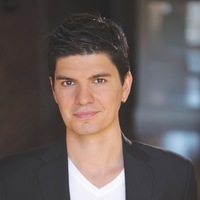






Uploads
Papers and Media by John Carlaw
The release, headlined Newcomers falling out of love with Canadian citizenship generated a number of other media headlines.
Concerns over how and whether those living and working in Canada are attaining citizenship and important rights — including to vote and run for office — are of course well placed. But love of country by immigrants is not the primary problem.
Individual choices and sentiments are a relevant factor, but there are observable structural explanations. Beyond Canada’s control, not all countries permit dual citizenship. That includes major source countries China and India where many immigrants to Canada are from. It is understandable that some permanent residents prefer not to renounce the citizenship of their country of origin.
But within Canada’s control, there are troubling shifts in our overall citizenship and immigration model. Inequalities connected to its colonial nature have left growing numbers of residents without citizenship or even a pathway to it. These shifts can be obscured by focusing primarily on the naturalization process and the sentiments some attach to it rather than the larger settler colonial landscape of migration and immigration and its relationship to citizenship and belonging at each stage.
culturalisme contribuent à définir son fond et sa portée. L’ob-
jectif de cet article est de contextualiser et d’appréhender la
déclinaison néoconservatrice du multiculturalisme au XXI e
siècle.
After 50 years, the adjectives used to characterize multiculturalism have come to define its substance and meaning. The aim of this article is to contextualize and grasp its twenty-first century neoconservative iteration.
This paper outlines characteristics and realities of neoconservative multiculturalism, including references to the Conservatives’ time in office and dynamics since their defeat in the 2015 election. These characteristics include 1) pragmatically adapting themselves to common sense notions of multiculturalism and immigration in Canada while also seeking to shift the politics of multiculturalism in Canada rightward by 2) seeking to empty it of anti-racist content and bind its remnants to a neoconservative worldview and 3) engaging in practices and discourses of exclusion, including a) engaging in clash of civilizations and Islamophobic discourses and policies, b) re-ethnicizing Canadian citizenship, c) targeting asylum seekers and 4) bolstering and collaborating with anti-multicultural civil society voices and actors.
Overall, neoconservative multiculturalism is a creative and flexible ideological project enforcing and advancing a highly regressive form of politics and public policy. In part conceding to public opinion in favour of multiculturalism and Canada’s demographics, it includes pragmatic nods to diversity but hollows out potentially more progressive interpretations of multiculturalism while demanding adherence to disturbing forms of nationalism and patriotism that police and weaken public debate. While the party’s direction is somewhat open with Erin O’Toole having been chosen as their new leader by the party membership in August of 2020, on many fronts Conservative Party and extra-party right discourses have continued to degenerate in this realm since the party’s 2015 defeat.
Cet article utilise les concepts de Kenneyisme (Kenney-isme, du nom de Jason Kenney, l’ancien ministre canadien de la Citoyenneté, de l’Immigration et du Multiculturalisme) et de multiculturalisme néoconservateur pour réconcilier les efforts du Parti conservateur du Canada à intégrer de nouveaux Canadiens ethnicisés et racialisés dans une « coalition gagnante minimale » avec les politiques d’exclusion et les discours créatifs défendus et utilisés alors qu’il était au pouvoir, de 2006 à 2015, particulièrement en ce qui a trait aux musulmans, aux réfugiés et aux travailleurs étrangers temporaires. En tant que type de politique que Stuart Hall nomme populisme autoritaire, l’accent sur la dimension « autoritaire » du populisme conservateur met de l’avant la nature souvent antidémocratique du projet, et ce, tant dans sa symbolique que dans sa substance. Cet article résume les racines du Kenneyisme et du multiculturalisme néoconservateur et examine l’évolution du parti à partir des Parti réformiste et Alliance canadienne. Il explore les cinq caractéristiques et tendances clés de l’approche politique et gouvernementale du parti, lesquelles démontrent leurs activités de rayonnement créatives ainsi que leurs formes de politique disciplinaire et d’exclusion sociale. Il conclut avec des réflexions sur un constat actuel du parti et l’avenir du Kenneyisme en tant que politique après leur défaite électorale de 2015 et la course au leadership de 2017.
The 2011 federal election saw the Conservatives complete their long march from
Reform Party roots to majority government. With this victory former citizenship and immigration minister Jason Kenney declared them the “party of new Canadians.” Former Conservative and Reform stalwart Tom Flanagan wrote that the party had found a new “ethnic pillar” of electoral support. While the extent of these claims has been challenged, some have argued they offer a positive model to other conservative parties worldwide. In some ways, the Conservatives have accommodated the party to Canada’s modern demographics. In government, they have maintained immigration levels for permanent residency and reached out to new Canadians and “ethnic voters” in a variety of ways as they seek to achieve Stephen Harper’s goal of making the Conservatives Canada’s “natural governing party.”
However, rather than serving as a positive model, the party is better viewed as having taken a creative yet cynical, incremental approach to achieving a majority government and shifting the gravity of Canadian politics to the right. The Conservatives have fostered and in other ways maintained and even deepened exclusionary inclinations held over from their Reform (1987–2000) and Canadian Alliance (2000–2003) predecessors. Theirs is a highly ideological and disciplinary approach to politics aimed at gaining a stable “minimum connected winning coalition” rather than seeking social consensus. The Conservative victory and time in power is best seen as the long-term culmination of a process of “Invasion from the Margin”—the right margin—of Canada’s political system, as Flanagan once framed the Reform project. The Conservative government’s policies adversely affect many actual and aspiring immigrants and have weakened democracy in policy-making in these fields. Unfortunately large numbers of (im)migrants and refugees have been perceived by the Conservatives as groups that can be excluded or their lives and existence made more difficult and precarious. Conservative populist discourses of acting in the interests of “ordinary people” and “hard working immigrants” often founder against the reality of policies that make (im)migrants’ lives unnecessarily more difficult. The government has also attempted to change the nature of public debate on citizenship, immigration and Canadian identity in troubling ways.
Such trends are evidenced in the 2014 Strengthening Canadian Citizenship Act.
Upcoming/Recent Talks by John Carlaw
Papers by John Carlaw
The release, headlined Newcomers falling out of love with Canadian citizenship generated a number of other media headlines.
Concerns over how and whether those living and working in Canada are attaining citizenship and important rights — including to vote and run for office — are of course well placed. But love of country by immigrants is not the primary problem.
Individual choices and sentiments are a relevant factor, but there are observable structural explanations. Beyond Canada’s control, not all countries permit dual citizenship. That includes major source countries China and India where many immigrants to Canada are from. It is understandable that some permanent residents prefer not to renounce the citizenship of their country of origin.
But within Canada’s control, there are troubling shifts in our overall citizenship and immigration model. Inequalities connected to its colonial nature have left growing numbers of residents without citizenship or even a pathway to it. These shifts can be obscured by focusing primarily on the naturalization process and the sentiments some attach to it rather than the larger settler colonial landscape of migration and immigration and its relationship to citizenship and belonging at each stage.
culturalisme contribuent à définir son fond et sa portée. L’ob-
jectif de cet article est de contextualiser et d’appréhender la
déclinaison néoconservatrice du multiculturalisme au XXI e
siècle.
After 50 years, the adjectives used to characterize multiculturalism have come to define its substance and meaning. The aim of this article is to contextualize and grasp its twenty-first century neoconservative iteration.
This paper outlines characteristics and realities of neoconservative multiculturalism, including references to the Conservatives’ time in office and dynamics since their defeat in the 2015 election. These characteristics include 1) pragmatically adapting themselves to common sense notions of multiculturalism and immigration in Canada while also seeking to shift the politics of multiculturalism in Canada rightward by 2) seeking to empty it of anti-racist content and bind its remnants to a neoconservative worldview and 3) engaging in practices and discourses of exclusion, including a) engaging in clash of civilizations and Islamophobic discourses and policies, b) re-ethnicizing Canadian citizenship, c) targeting asylum seekers and 4) bolstering and collaborating with anti-multicultural civil society voices and actors.
Overall, neoconservative multiculturalism is a creative and flexible ideological project enforcing and advancing a highly regressive form of politics and public policy. In part conceding to public opinion in favour of multiculturalism and Canada’s demographics, it includes pragmatic nods to diversity but hollows out potentially more progressive interpretations of multiculturalism while demanding adherence to disturbing forms of nationalism and patriotism that police and weaken public debate. While the party’s direction is somewhat open with Erin O’Toole having been chosen as their new leader by the party membership in August of 2020, on many fronts Conservative Party and extra-party right discourses have continued to degenerate in this realm since the party’s 2015 defeat.
Cet article utilise les concepts de Kenneyisme (Kenney-isme, du nom de Jason Kenney, l’ancien ministre canadien de la Citoyenneté, de l’Immigration et du Multiculturalisme) et de multiculturalisme néoconservateur pour réconcilier les efforts du Parti conservateur du Canada à intégrer de nouveaux Canadiens ethnicisés et racialisés dans une « coalition gagnante minimale » avec les politiques d’exclusion et les discours créatifs défendus et utilisés alors qu’il était au pouvoir, de 2006 à 2015, particulièrement en ce qui a trait aux musulmans, aux réfugiés et aux travailleurs étrangers temporaires. En tant que type de politique que Stuart Hall nomme populisme autoritaire, l’accent sur la dimension « autoritaire » du populisme conservateur met de l’avant la nature souvent antidémocratique du projet, et ce, tant dans sa symbolique que dans sa substance. Cet article résume les racines du Kenneyisme et du multiculturalisme néoconservateur et examine l’évolution du parti à partir des Parti réformiste et Alliance canadienne. Il explore les cinq caractéristiques et tendances clés de l’approche politique et gouvernementale du parti, lesquelles démontrent leurs activités de rayonnement créatives ainsi que leurs formes de politique disciplinaire et d’exclusion sociale. Il conclut avec des réflexions sur un constat actuel du parti et l’avenir du Kenneyisme en tant que politique après leur défaite électorale de 2015 et la course au leadership de 2017.
The 2011 federal election saw the Conservatives complete their long march from
Reform Party roots to majority government. With this victory former citizenship and immigration minister Jason Kenney declared them the “party of new Canadians.” Former Conservative and Reform stalwart Tom Flanagan wrote that the party had found a new “ethnic pillar” of electoral support. While the extent of these claims has been challenged, some have argued they offer a positive model to other conservative parties worldwide. In some ways, the Conservatives have accommodated the party to Canada’s modern demographics. In government, they have maintained immigration levels for permanent residency and reached out to new Canadians and “ethnic voters” in a variety of ways as they seek to achieve Stephen Harper’s goal of making the Conservatives Canada’s “natural governing party.”
However, rather than serving as a positive model, the party is better viewed as having taken a creative yet cynical, incremental approach to achieving a majority government and shifting the gravity of Canadian politics to the right. The Conservatives have fostered and in other ways maintained and even deepened exclusionary inclinations held over from their Reform (1987–2000) and Canadian Alliance (2000–2003) predecessors. Theirs is a highly ideological and disciplinary approach to politics aimed at gaining a stable “minimum connected winning coalition” rather than seeking social consensus. The Conservative victory and time in power is best seen as the long-term culmination of a process of “Invasion from the Margin”—the right margin—of Canada’s political system, as Flanagan once framed the Reform project. The Conservative government’s policies adversely affect many actual and aspiring immigrants and have weakened democracy in policy-making in these fields. Unfortunately large numbers of (im)migrants and refugees have been perceived by the Conservatives as groups that can be excluded or their lives and existence made more difficult and precarious. Conservative populist discourses of acting in the interests of “ordinary people” and “hard working immigrants” often founder against the reality of policies that make (im)migrants’ lives unnecessarily more difficult. The government has also attempted to change the nature of public debate on citizenship, immigration and Canadian identity in troubling ways.
Such trends are evidenced in the 2014 Strengthening Canadian Citizenship Act.